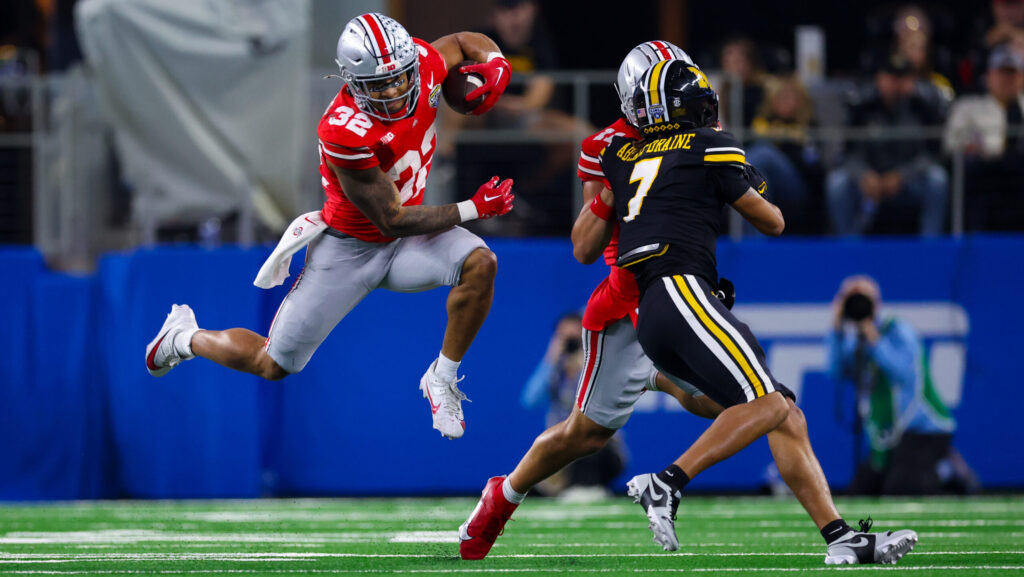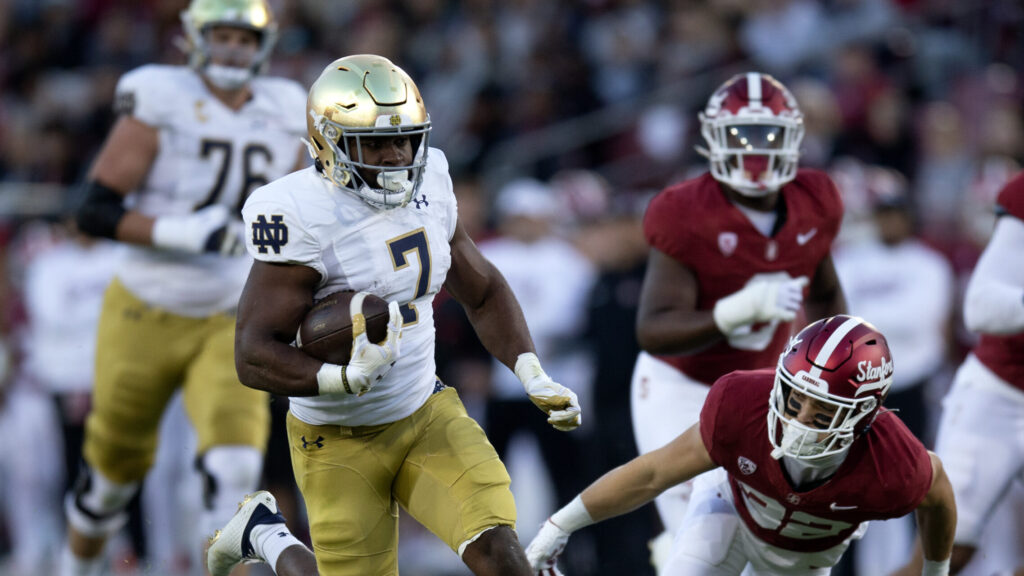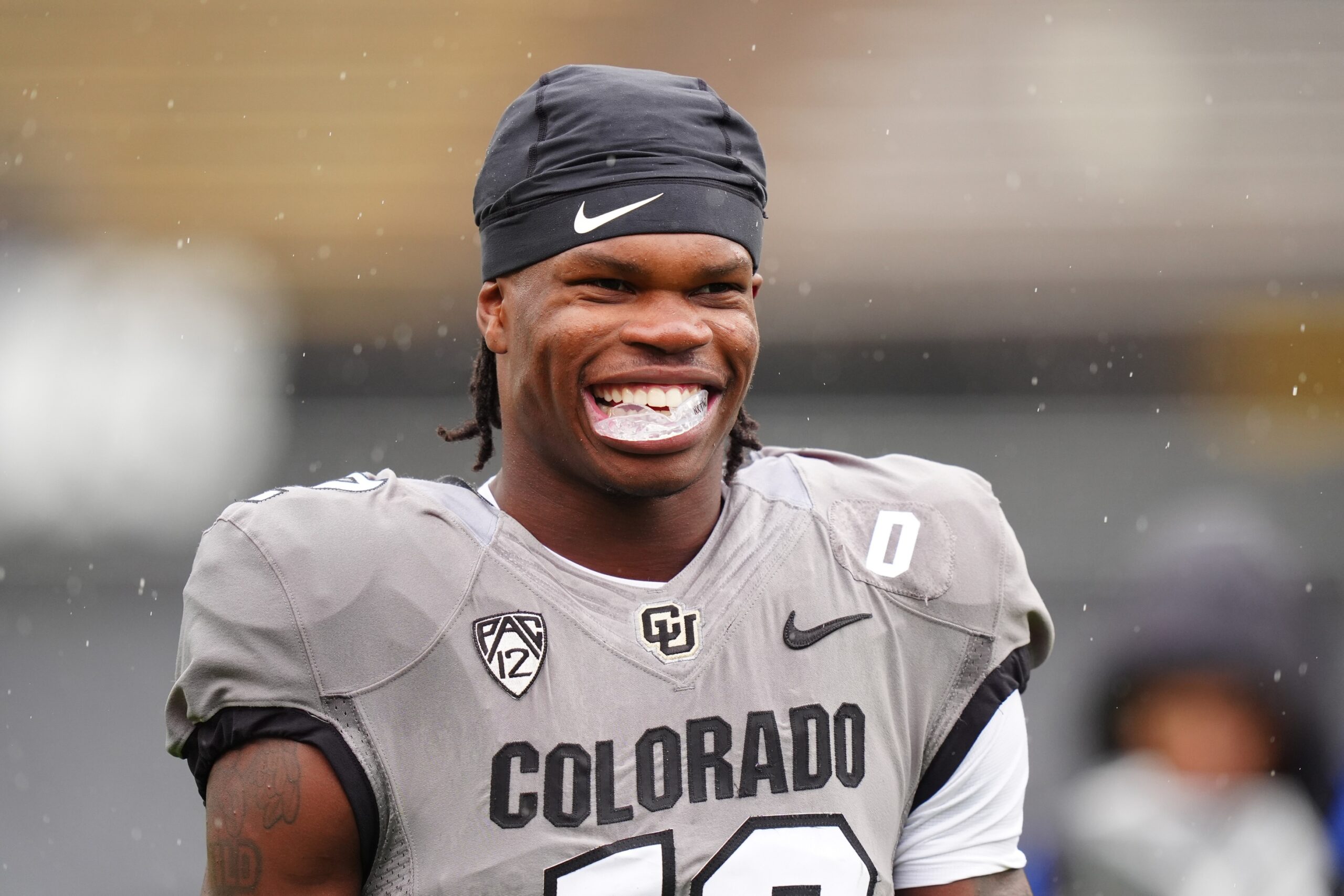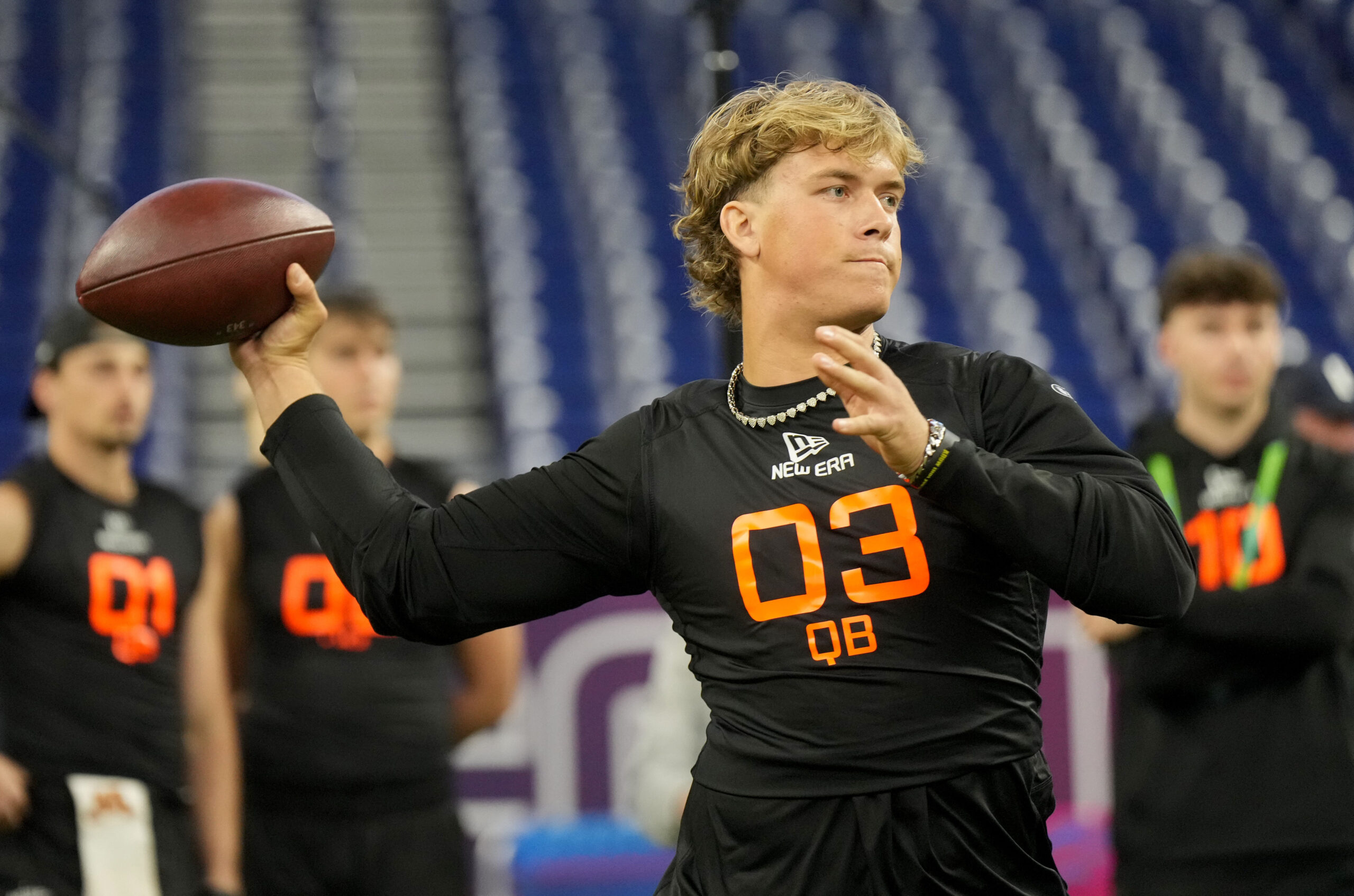Fantasy
1/5/24
8 min read
2024 Dynasty Fantasy Football: Early Rookie Draft Running Back Rankings

Since 2006, only one class didn’t have a running back drafted in the first 50 picks. This class may very well be the second. But while it’s an overall weak class at the position, it’s not as if it’s without future producers. Make sure to get a very early start on scouting this upcoming rookie class through this article.
EARLY 2024 DYNASTY ROOKIE RB RANKINGS
1. TreVeyon Henderson, Ohio State 
Age: 21
2023 Stats: 926 Rushing Yards, 229 Receiving Yards, 11 TDs
After a fantastic freshman season, TreVeyon Henderson had a disappointing sophomore season where his fantasy points per game took a nearly 10-point drop, and all his peripherals also fell. But he wiped any worry that he wasn’t the level of player we hoped him to be by having an excellent junior season.
He was wildly efficient as a rusher, turning a 43.9 percent carry percentage into 68.2 percent of Ohio State’s rushing yards and posting a career-high 7.5 percent target share out of the backfield. We’re still waiting on an official declaration from Henderson, but as long as he does, he’s the clear RB1 of this rookie class.

2. Jonathon Brooks, Texas 
Age: 20
2023 Stats: 1,139 Rushing Yards, 286 Receiving Yards, 11 TDs
If it wasn’t for an ACL injury suffered in November, consensus would likely be much higher on Jonathon Brooks. He was one of the best rushers in the class, rushing for 64.0 percent of Texas’ rushing yards as a 20-year-old junior.
He also added efficient receiving work out of the backfield with 0.89 yards per team pass attempt on a 9.0 percent target share. He finished the season tied for the highest points per game of any running back listed here, and slots in as the RB2 in this weak running back class.
3. Bucky Irving, Oregon 
Age: 21
2023 Stats: 1,180 Rushing Yards, 413 Receiving Yards, 13 TDs
Bucky Irving has taken a linear usage path, progressing from a 24.2 percent carry percentage as a 19-year-old freshman to 41.4 percent as a 21-year-old junior. While his rushing efficiency has been quite strong, his receiving profile makes Irving interesting in upcoming rookie drafts.
He’s posted at least an 8.0 percent target share in back-to-back seasons, finishing this past season with an 11.8 percent target share out of the backfield. We’re still waiting on Irving to declare officially, but assuming he does, he’s one of the more intriguing running back profiles in this class.
4. Will Shipley, Clemson 
Age: 21
2023 Stats: 827 Rushing Yards, 244 Receiving Yards, 7 TDs
Will Shipley is coming off the worst season of his collegiate career, posting career lows in fantasy points per game, carry percentage and rushing touchdown share. While it wasn’t a fantastic season, that’s also partly due to him being a solid producer every season at Clemson.
He’s been an adequate receiver out of the backfield with target shares of at least 7.5 percent every year, along with yards per team pass attempt of at least 0.50 each of the past two seasons. Shipley clearly wasn’t too worried about tanking his draft stock this past year, as he still opted to declare early for the draft.

5. Audric Estime, Notre Dame 
Age: 20
2023 Stats: 1,341 Rushing Yards, 142 Receiving Yards, 18 TDs
Audrice Estimé enjoyed a major breakout this past season, which likely led to him foregoing his senior eligibility to declare early for the draft. He turned a 51.3 percent carry percentage into 61.4 percent of Notre Dame’s rushing yards and 67.0 percent of their rushing touchdowns.
While Estimé was one of the best pure rushers in college football this past season, he hasn’t shown much as a receiver out of the backfield. He holds a career-high target share of just 5.4 percent, and at a position where the average target share is 12.0 percent for RB1 producers, it is hard to envision the high-end upside at the next level.
6. Braelon Allen, Wisconsin 
Age: 20
2023 Stats: 984 Rushing Yards, 132 Receiving Yards, 12 TDs
Braelon Allen is the youngest running back in this draft, not turning 20 years old until the 20th of this month. He showed up to Wisconsin as a 17-year-old linebacker recruit and finished his freshman season with 17.6 fantasy points per game on the back of a 50.1 percent rushing yard share.
>>READ: 2024 NFL Draft Hidden Gems
Unfortunately, we haven’t seen linear growth following that season. His rushing efficiency worsened with a larger workload, and his fantasy production never eclipsed 18 points per game. But the biggest knock is his lack of receiving work, failing to post an 8.0 percent target share during his collegiate career. Although, given his age, there is still some hope we see him develop into a much more complete running back.
7. Trey Benson, Florida State 
Age: 21
2023 Stats: 906 Rushing Yards, 227 Receiving Yards, 15 TDs
Trey Benson is one of just two running backs in this class currently projected for second-round draft capital, which is enticing. But the profile doesn’t quite stack up to second rounders of the past. While he was efficient as a rusher, he never eclipsed even a 35.0 percent carry percentage and hasn’t been a factor as a receiver out of the backfield.
His career-high target share came from this past season, where it was just 5.9 percent. The biggest indicator of NFL workloads is collegiate workloads, and Benson’s certainly wasn’t a strong one, especially considering he wasn’t sharing the backfield with another high-profile running back.
8. Donovan Edwards, Michigan 
Age: 20
2023 Stats: 393 Rushing Yards, 249 Receiving Yards, 3 TDs
It’s hard to see Donovan Edwards’ 2023 season as anything but disappointing. After a sophomore season where he produced 17.4 points per game alongside Blake Corum, his production fell to just 8.8 points per game this season. Part of the reason is his rushing efficiency took a major hit, albeit still on a low rushing workload, going from a 37.7 percent rushing yard share to 17.2 percent.
But if there’s a saving grace with Edwards’ profile, it’s that he’s been a very good receiver every season of his collegiate career, posting at least an 8.0 percent target share every season, including 10.2 percent this season. If Edwards can achieve solid draft capital, there is still plenty of intrigue because of who he’s been as a receiver out of the backfield.

9. Blake Corum, Michigan 
Age: 23
2023 Stats: 1,111 Rushing Yards, 117 Receiving Yards, 26 TDs
Corum is a Michigan legend, having played all four seasons there and producing at a high level, possibly with a national championship to cap it off. But he’s much more underwhelming from a prospect profile perspective.
Corum will be nearly 24 years old by the time the 2024 season starts, and he isn’t projected to go in the first two rounds of the NFL draft. Although he has shown he can have solid efficiency as a rusher with a solid workload, posting at least 45.0 percent rushing yard shares in back-to-back seasons. It’s an interesting prospect profile but likely one that lacks high-end upside.
10. Ray Davis, Kentucky 
Age: 24
2023 Stats: 1,129 Rushing Yards, 323 Receiving Yards, 21 TDs
Ray Davis is one of the oldest prospects in this class after playing at three schools over five seasons. But he finished his collegiate career at a very strong level, hopefully leading to decent draft capital in April. His 23.4 fantasy points per game ties Brooks for the highest among all running backs listed, and he did so on a very strong 68.0 percent rushing yard share and 76.9 percent rushing touchdown share.
He also finished his collegiate career with back-to-back 10.0 percent target shares out of the backfield. But despite having a very strong 2023 season, his age and draft capital uncertainty leave us with a profile that’s likely nothing more than a flyer.
11. MarShawn Lloyd, USC
Age: 23
2023 Stats: 820 Rushing Yards, 232 Receiving Yards, 9 TDs
While MarShawn Lloyd never achieved even a 40.0 percent carry percentage during his four-year collegiate career, he was quite efficient with at least a 50.0 percent rushing yard share in his last two seasons between South Carolina and USC.
He also showed adequate efficiency as a receiver with at least 0.55 yards per team pass attempt despite not posting at least a 10.0 percent target share in his final two seasons. But with all this being said, we’ve never seen Lloyd handle a high-volume workload, and he is also likely better suited to be a Day 3 selection in the NFL draft. For lack of a better term, Lloyd is simply a flyer at this point.






